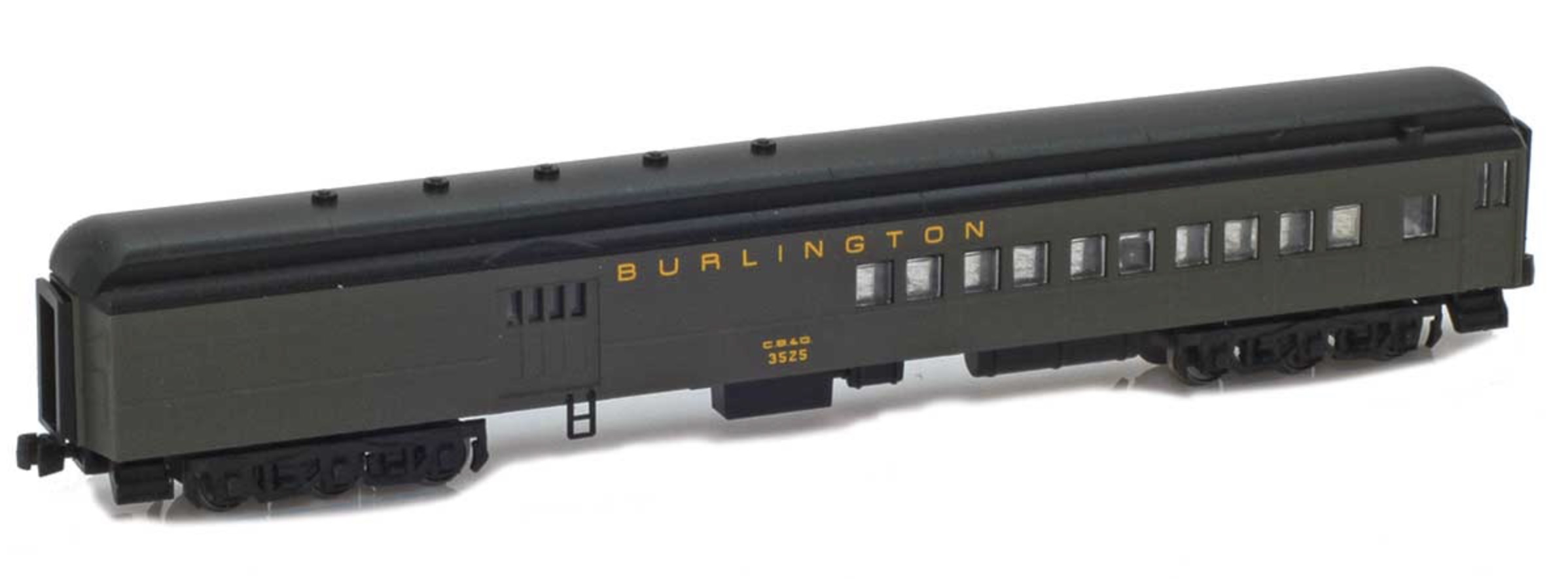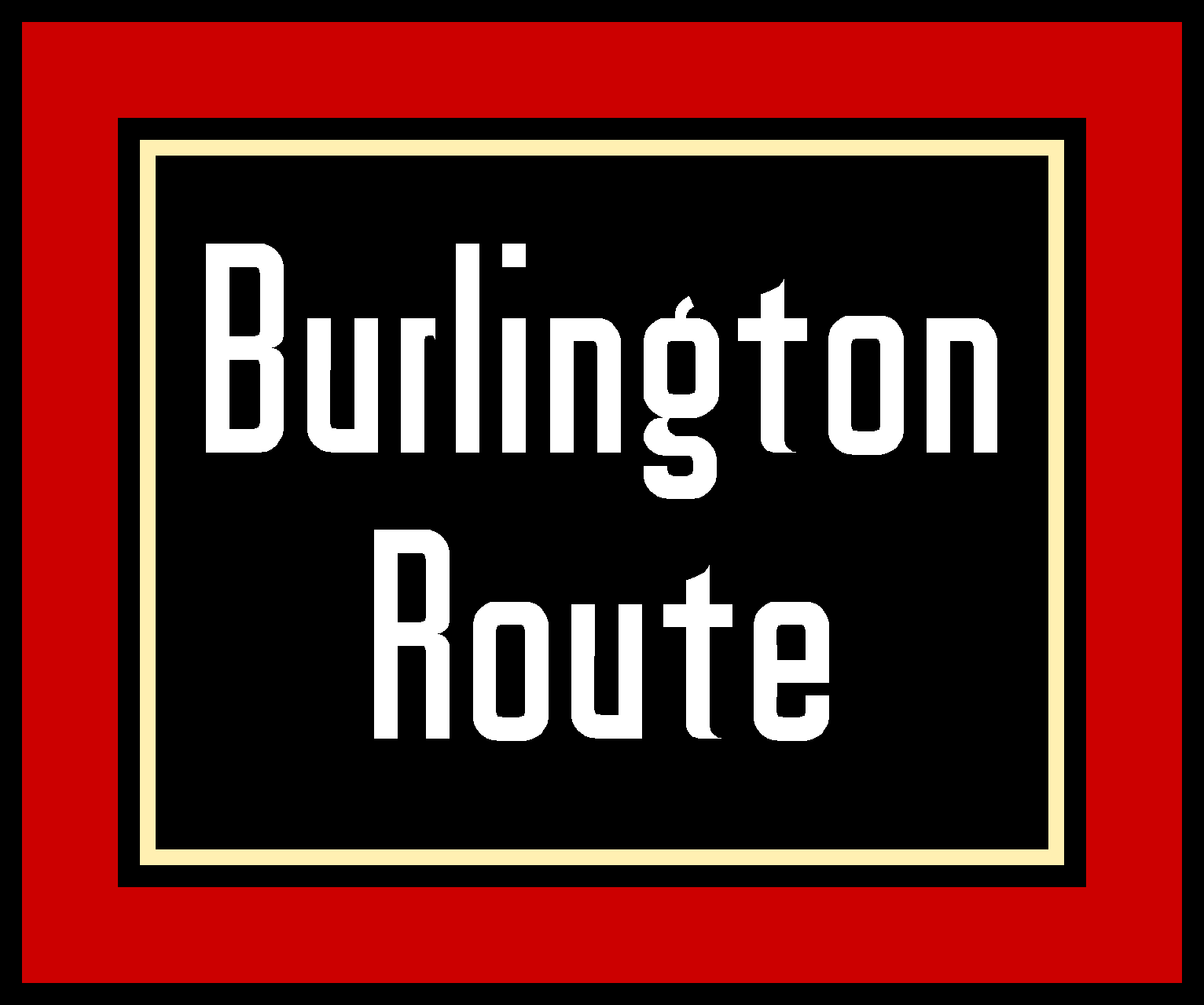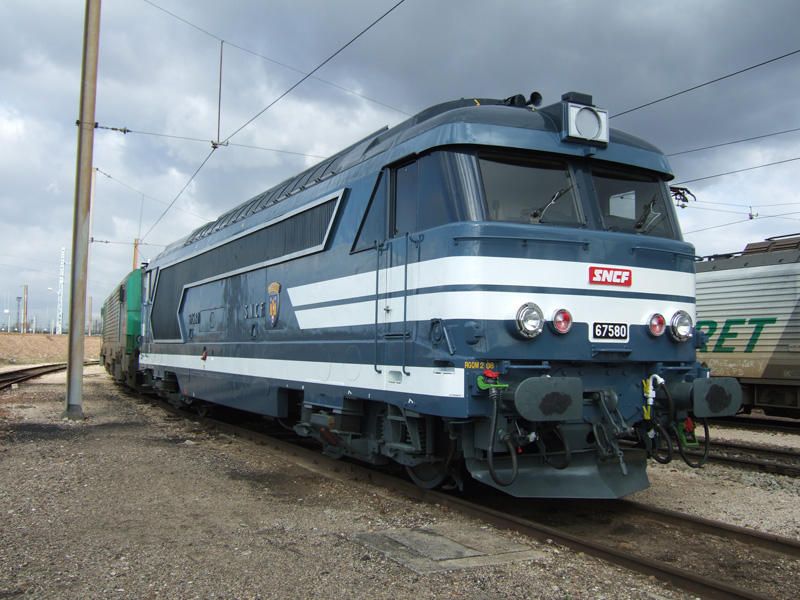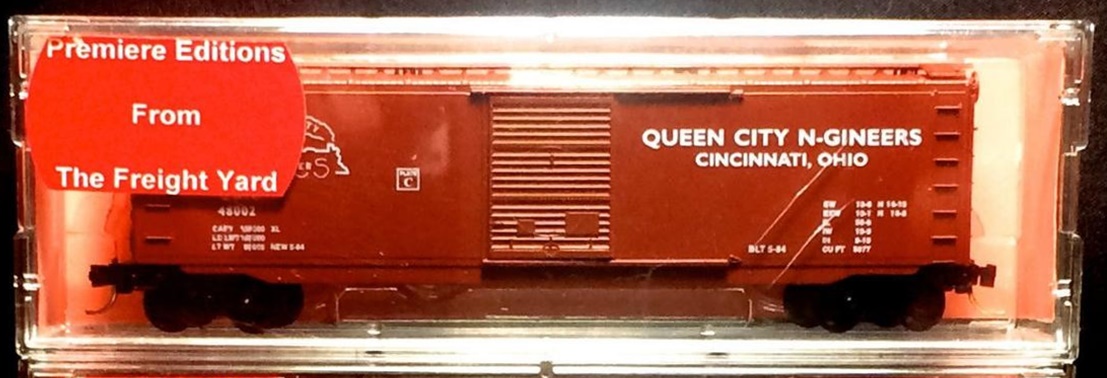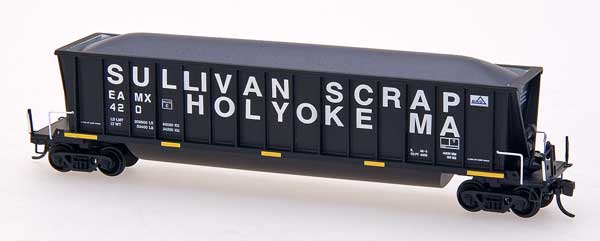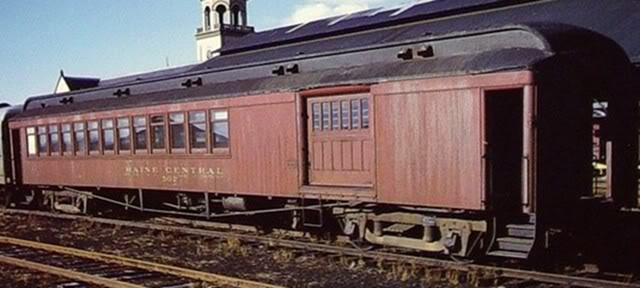Prototype History: Heavyweight Passenger Cars were the prevalent style of railcars used for passenger service during the interwar period. They were constructed of concrete, wood and steel. They were much heavier than modern passenger cars due to the materials used in their construction. They were so heavy that they ofthen (but not always) required three-axle bogies to support them.
A combine car in North American parlance, most often referred to simply as a combine, is a type of railroad car which combines sections for both passengers and freight. Most often, it was used on short lines to carry passengers and their luggage, as a full car would not have been cost effective. One half (or less) of the car is built like a baggage car while the other half of the car is a regular passenger car. This type of combine is referred to as a coach-baggage. Another common type of combine in railroad use was the coach-RPO. A portion of this type of car was configured as a railway post office while the rest of the car was configured as a coach.
From Wikipedia
A combine car in North American parlance, most often referred to simply as a combine, is a type of railroad car which combines sections for both passengers and freight. Most often, it was used on short lines to carry passengers and their luggage, as a full car would not have been cost effective. One half (or less) of the car is built like a baggage car while the other half of the car is a regular passenger car. This type of combine is referred to as a coach-baggage. Another common type of combine in railroad use was the coach-RPO. A portion of this type of car was configured as a railway post office while the rest of the car was configured as a coach.
From Wikipedia
Road Name History: The Chicago, Burlington and Quincy Railroad (reporting mark CBQ) was a railroad that operated in the Midwestern United States. Commonly referred to as the Burlington or as the Q, the Burlington Route served a large area, including extensive trackage in the states of Colorado, Illinois, Iowa, Kentucky, Missouri, Montana, Nebraska, Wisconsin, Wyoming, and also in New Mexico and Texas through subsidiaries Colorado and Southern Railway, Fort Worth and Denver Railway, and Burlington-Rock Island Railroad.[citation needed] Its primary connections included Chicago, Minneapolis-St. Paul, St. Louis, Kansas City and Denver. Because of this extensive trackage in the midwest and mountain states, the railroad used the advertising slogans "Everywhere West", "Way of the Zephyrs", and "The Way West". It merged into Burlington Northern in 1970.
In 1967, it reported 19,565 million net ton-miles of revenue freight and 723 million passenger miles; corresponding totals for C&S were 1,100 and 10 and for FW&D were 1,466 and 13. At the end of the year CB&Q operated 8,538 route-miles, C&S operated 708 and FW&D operated 1362. (These totals may or may not include the former Burlington-Rock Island Railroad.)
Information sourced from Wikipedia
In 1967, it reported 19,565 million net ton-miles of revenue freight and 723 million passenger miles; corresponding totals for C&S were 1,100 and 10 and for FW&D were 1,466 and 13. At the end of the year CB&Q operated 8,538 route-miles, C&S operated 708 and FW&D operated 1362. (These totals may or may not include the former Burlington-Rock Island Railroad.)
Information sourced from Wikipedia
Brand/Importer Information: 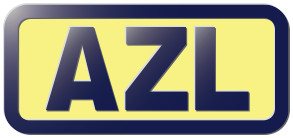 AZL is the leader in North American Z scale locomotives and rolling stock. Since 2000, AZL has released a vast variety of freight, passenger and locomotives. AZL continues to push the boundaries of Z scale with amazing details and incredible performance. No matter if you are looking to run steam, or the most modern diesels, AZL has something for you.
AZL is the leader in North American Z scale locomotives and rolling stock. Since 2000, AZL has released a vast variety of freight, passenger and locomotives. AZL continues to push the boundaries of Z scale with amazing details and incredible performance. No matter if you are looking to run steam, or the most modern diesels, AZL has something for you.

Item created by: CNW400 on 2023-11-21 12:46:17
If you see errors or missing data in this entry, please feel free to log in and edit it. Anyone with a Gmail account can log in instantly.
If you see errors or missing data in this entry, please feel free to log in and edit it. Anyone with a Gmail account can log in instantly.


